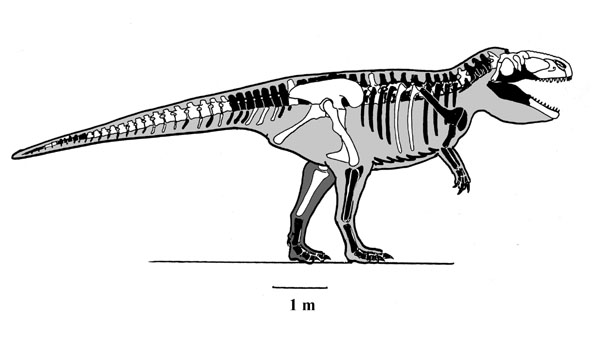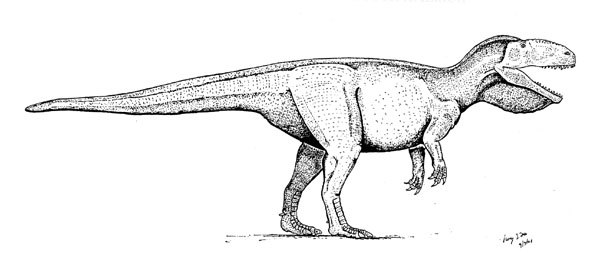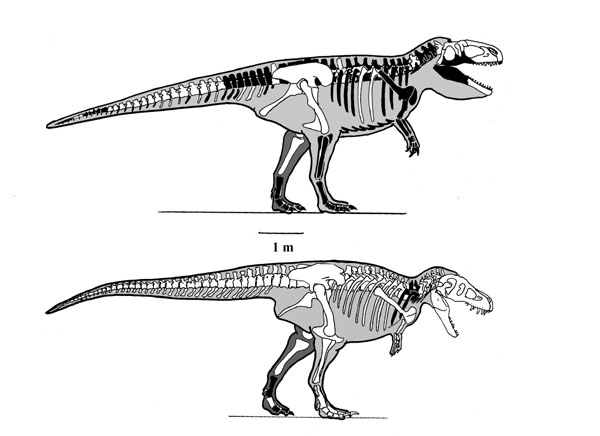Species: carolinii CORIA & SAIGADO, 1995
Etymology: In honor of Reuben Carolini.
Holotype: (Museo de la Universidad Nacional del Comahue, El Chocon collection) MUCPv-CH-1
Locality: 15 km south of Villa El Choon, Neuquen Province, Argentina.
Horizon: Candeleros Member, Rio Limay Formation, Neuqen Group.
Biostratigraphy:
Age: Limayan Tetrapoda Assemblage, Cenomanian Stage, Uppermiddle Gallic Subepoch, Lowermost Gulf Epoch, Late Early or Middle Cretaceous-Turonian Stage, Uppermost Gallic Subepoch, Lower Gulf Epoch, Early Late Cretaceous.
Material: Premaxilla, maxilla, lachrymal, incomplete jugal, quadratojugal, quadrate, braincase, dentary, proximal cervicals, nearly complete dorsal and caudal series, sacrum, complete pectoral and pelvic girdles, femur, tibia and astragalus.



Comparison between Gigantosaurus and T. rex ('Sue')
Referred material:
CALVO, 1999
MUCPv-52: Tooth.
CALVO & CORIA, 1998, 2000Locality: Cerro Los Candeleros locality, 35 km southwest of Plaza Huincul, Neuquen Province, Argentina.
Horizon: Candeleros Member, Rio Limay Formation, Neuquen Group.
Biostratigraphy:
Age: Limayan Tetrapoda Assemblage, Cenomanian Stage, Uppermiddle Gallic Subepoch, Lowermost Gulf Epoch, Late Early or Middle Cretaceous-Turonian Stage, Uppermost Gallic Subepoch, Lower Gulf Epoch, Early Late Cretaceous.
Material:
MUCPv-95: Fragmentary left dentary.